I know there are lots of similar questions here and I checked the famous one, and then grasped the difference between Bounds, and Frame.
Now I have some problem related to them. I played around with them , but it didn't show as I expected.
What I don't understand here is:
- Why the frame origin of Y is 44.000000 below the top even I set the UIImageView at the left corner? Because bounds should be "The bounds of an UIView is the rectangle, expressed as a location (x,y) and size (width,height) relative to its own coordinate system (0,0)." (Cocoa: What's the difference between the frame and the bounds?) I thought the frame also should start at the left corner here.

#import "ViewController.h"
@interface ViewController ()
//@property (weak, nonatomic) IBOutlet UIImageView *image;
@property (weak, nonatomic) IBOutlet UIImageView *image2;
@end
@implementation ViewController
- (void)viewDidLoad
{
[super viewDidLoad];
// Do any additional setup after loading the view, typically from a nib.
//UIImage *imageView = [UIImage imageNamed:@"stanford"];
// self.image.alpha = 1;
// self.image.contentMode = 1;
// self.image.image = imageView;
// [self.image setAlpha:0.1];
// [self.image setContentMode:UIViewContentModeCenter];
// [self.image setImage:imageView];
NSURL *url = [[NSURL alloc] initWithString:@"http://upload.wikimedia.org/wikipedia/commons/thumb/e/ed/Pitbull_2%2C_2012.jpg/472px-Pitbull_2%2C_2012.jpg"];
NSData *data = [NSData dataWithContentsOfURL:url];
UIImage *imageData = [UIImage imageWithData:data];
[self.image2 setBounds:CGRectMake(0, 0, self.view.frame.size.width, self.view.frame.size.height)];
[self.image2 setImage:imageData];
NSLog(@"frame.orign.x:%f,frame.origin.y:%f",self.image2.frame.origin.x,self.image2.frame.origin.y);
}